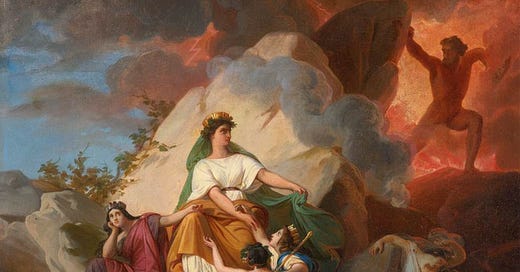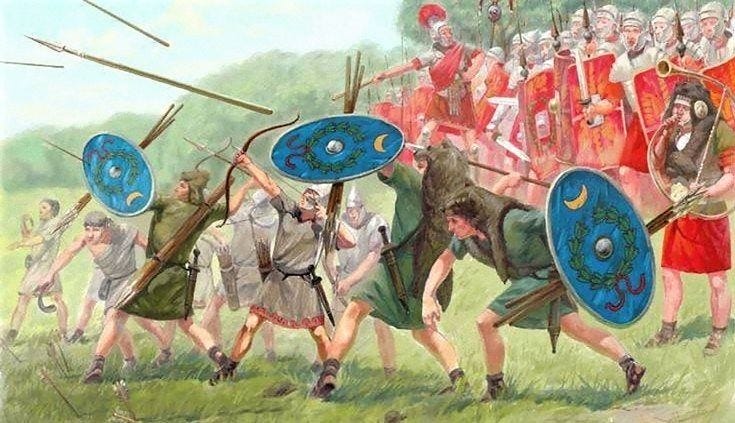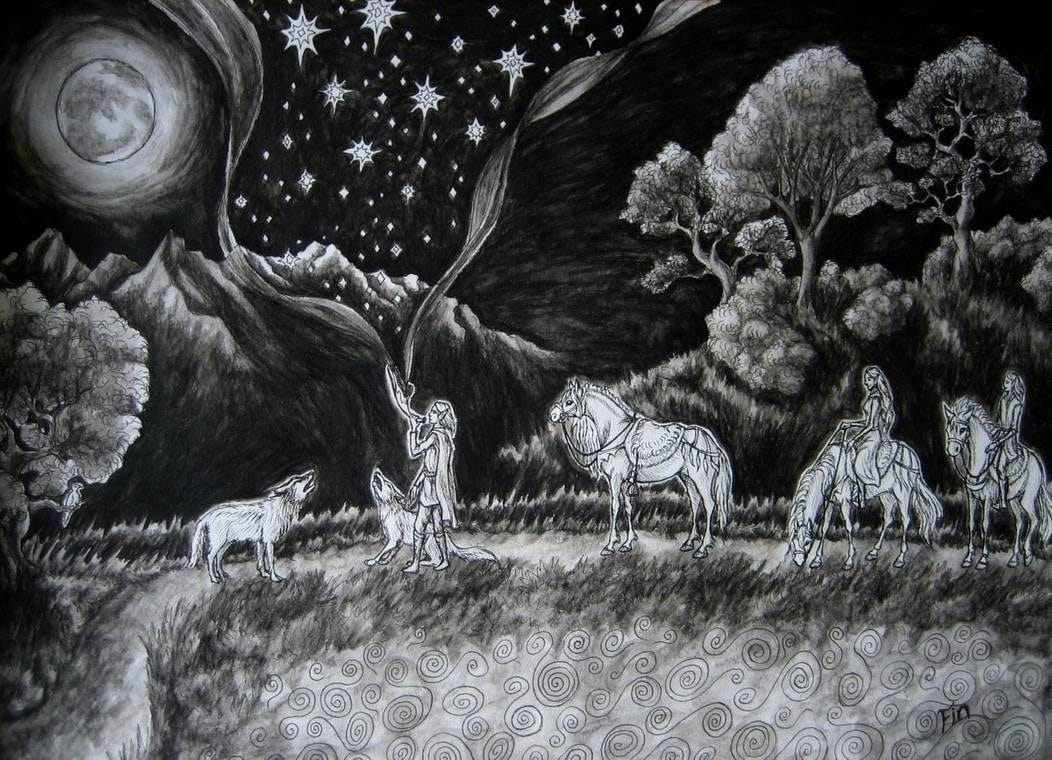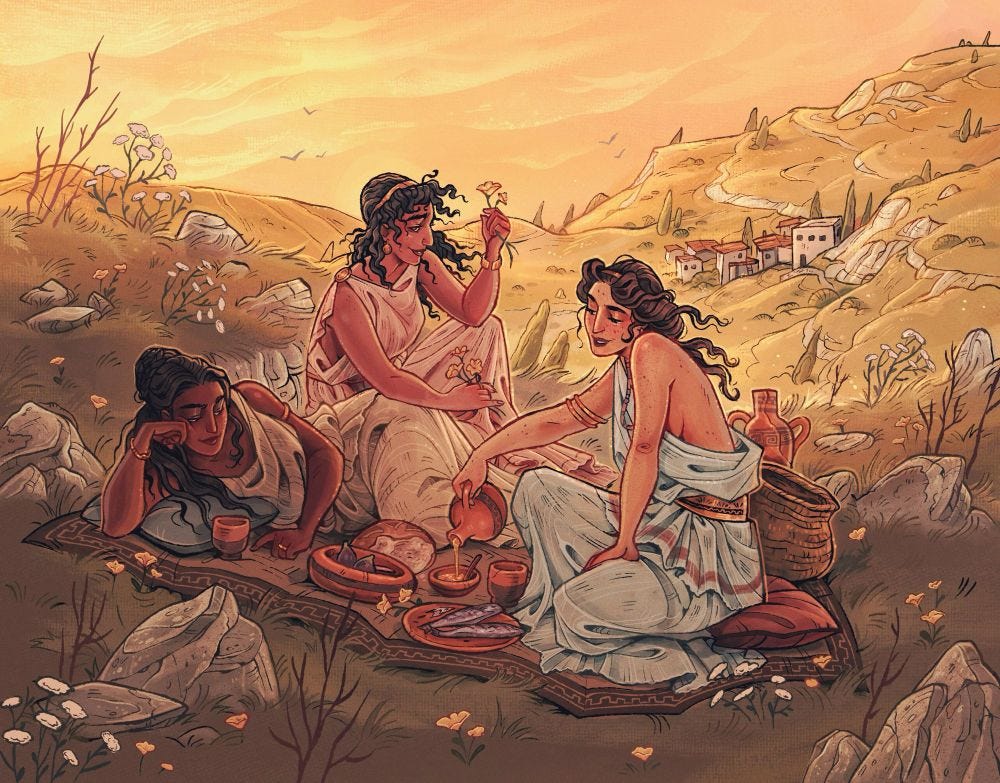I have been reflecting on the overarching narrative of humanity. The world is weird. Yet that is the nature of the world. We live in a state of eclipse in humanity. Since the dawn of civilisation really. So really nothing new under the sun. This has been the state of affairs for as long as I can remember. I have been around quite a few life times already. In this one humanity just has more destructive tools. Yet the dynamics of ego and duality are still the same.
The Inner Child and Inner Critic
It is really the same games people are playing out. The splitting of things into dualities. The realm of the ego. The hiding away from the inner child that carries the trauma (both personal and collective trauma). Which has been there since the dawn of civilisation and perpetuated ever since. The inner child also contains vulnerability, emotional openness and such. Which the ego and inner critic keeps at bay. With its "virtues" that it imposes through punishment. Though part of it are the narratives of the ego, and the identification with the separate "I". Which fears death. Hence the fear leads to a need for control. We can call this the Kingdom of Kronos from an Orphic lens, or we can call this the rule of the Serpent. Or whatever label you want to give it. It all points to the same underlying dynamic and Truth. It are Plato's shadows on the cave wall. The delusions of ego and the inner critic (internalised societal and familial norms). Next to projection of the inner world onto the world. The externalisation of the inner conflicts between the true Self of the person with the personal and collective trauma narratives, steeped in ego and dualism.
A Story of Collective Trauma
One big one the Right does is the wounded inner child (victim-child) onto the Left. Which is the Rights own wounded inner self. Which plays into the entire victim-hood culture that the Right sees. Similarly the inner critic is at play with both. Some of them externalise it onto the world, next to just internalise it, and the other only internalise it. There is like the victim-child (scapegoat and Dionysus) and inner critic/accuser, then the priest and external redeemer. But also the wanderer and internal redeemer.
With the left really being under the influence of the Sovereignty Goddess. Protecting the marginalised, the wounded inner child. Trying to be nurturing parents. Bringing back balance and self-sovereignty. Yet even this can still play into duality itself. If the inner reality is not understood. How we have to do more than just rebel against something, or fight something. This itself only will keep one stuck in the forever war between wounded inner child and inner critic. Both internally and externally. Only when one faces the inner child and inner critic within, will this lead to a rebirth and reclaiming of self-sovereignty. Then one is beyond the narrative between inner child and inner critic.
Or really how the world sees it, “chaos and primal hedonism” (the actual human needs of the inner child, that come out in distorted ways), and the “order” of the accuser and inner critic, trying to make a world of perfect moral perfection. Trying to make the world more perfect and moral, than God himself. This often also plays into the ego, who is identified with this inner critic and need for control. Without this control it fears annihilation and total chaos. It fears the inner child and true realness and rawness of being which is primal innocence.
Gilgamesh and Enkidu
This itself started way back with the story of Enkidu. Written about in Sumerian poems and in the Akkadian Epic of Gilgamesh, during the 2nd millennium BC. An ancient representation of the wild man. He is the Lord of the good place. The fear of death that Gilgamesh had drove him to seek immortality. In the story Inanna also asks her brother Utu for help, in vain, and then Gilgamesh. Gilgamesh cuts the tree, kills the serpent, expels the eagle to the mountain, and the demon to the desert. The tree is the symbol of the Self. The serpent is as much as Enkidu a symbol of the shadow and primal nature of humanity. The eagle representing the heavens, law and order. With the demon being sent into the desert being the wanderer and scapegoat sent out into the wilderness. This as much as the story of Eden symbolises the creation of duality, and with it the split of construct of the ego, with its narratives. Consciousness split from the unconscious, and with it split from primal instinct in an integrated way.
This itself later played out throughout history as well. The eternal re-occurrence of the same pattern and dance between what Nietzsche would call Apollo and Dionysus. The movement away from the intertwined nature of Apollo and Dionysus, as both symbols of the Self and primal instinct, as much as harmony over this. Disciplined, not in the sense of control but harmonized and in sync. Where the will of the Self becomes the will of the “individual”. A state beyond straying from the Self.
Apollo's Wolves
When it comes to Apollo also, he was not this solar deity of consciousness in its original sense at all. Apollo has a very rich wolf cult mythology. Myth references wolves as being important to his cult prior to his very birth. In some versions Leto takes the form of a wolf in her pregnancy (a goddess who has a significant underworld cult). As wolves were known in Greece as creatures of the twilight hours between day and night there is a presence of Leto’s association with dusk when the sun sets. The wolf is at the same time synonymous with light in his cult, in which he bears forth the light. The wolf thus is associated with the very kindling of light, and a hazardous time, the new beginnings and also the last hours.
The Hellenic tendency to depict Apollon Lykeios as a youth with his hand upraised over his head in a crowning gesture is connected to his role of protection during the early periods of life. This Apollo is the pastoral Apollo who protects the herds from predation in order to stave away famine and preserve the community. He is master of the wolves. Yet he also takes a wolf form, as does Zeus and Pan. At other times he sends a wolf as his envoy for which a massive wolf was erected before his temple at Delphi. As a wolf, Apollo for instance destroys the Telchines of Rhodes by which he is called Telchinios, associating the wolf with violent winds and storms that can be just as damaging on crops as wolves are to livestock. This connection to storms is also echoed in the ancient Koryos connection to the thunder-god. Wolves are the children of Apollo.
Apollo as the wolf-god is the god of the destructive forces of nature, but also the god who is merciful when it comes to those forces. His role is not just of death and destruction, but also creation and renewal. Which is necessary for preserving life. The Pythian festivals were originally every nine years representing the conclusion of a divine year. Which echoes the nine years the Koryos rites could last. In Tarsus, which was colonized by Argives, the the wolf cult of Apollo was particularly important. In coins from Tarsus Apollo was depicted holding two wolves, were in another scene Demeter approaches Apollo with his wolves as she is looking for Persephone. Finally the poet Lycopron, said two wolves were the hounds of Apollo and represented his two prophets. Where Apollo was also invoked as follows; "And you, Apollo, lord of the Wolf, be a wolf to the enemy force and give them groan for groan!"
The Titans Within
It is through this harmonising between these dualities, that we can move beyond them, and get out of this state of duality with its control and chaos. Which is also reflected within the following by Olympiodorus, the Neo-Platonic Philosopher. “At the start, our irrational side is like the Titans, destroying our rational and higher self. When we neglect our intuitive intellect, which is hidden within us and connects us to both the lower and higher aspects of ourselves, we become like the Titans (or traitors to ourselves). But when we align ourselves with this intuitive aspect, we become like Bacchus, in control and in harmony with our irrational side.” Which is why we see what we do in the modern world as well. Many have become like the Titans. Traitors to themselves, and with it to the true goodness of the world.
The Second Coming by W. B. Yeats
Turning and turning in the widening gyre
The falcon cannot hear the falconer;
Things fall apart;
the centre cannot hold;
Mere anarchy is loosed upon the world,
The blood-dimmed tide is loosed, and everywhere
The ceremony of innocence is drowned;
The best lack all conviction, while the worst
Are full of passionate intensity.
Surely some revelation is at hand;
Surely the Second Coming is at hand.
The Second Coming! Hardly are those words out
When a vast image out of Spiritus Mundi
Troubles my sight: somewhere in sands of the desert
A shape with lion body and the head of a man,
A gaze blank and pitiless as the sun,
Is moving its slow thighs, while all about it
Reel shadows of the indignant desert birds.
The darkness drops again; but now I know
That twenty centuries of stony sleep
Were vexed to nightmare by a rocking cradle,
And what rough beast, its hour come round at last,
Slouches towards Bethlehem to be born?






